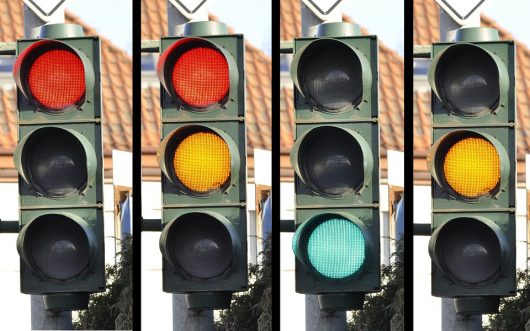Poverty Stoplight Puts Poverty in the Spotlight
 Fundación Paraguaya has developed a tool to help families self-assess their poverty level and develop a personalized plan to improve their status.
Fundación Paraguaya has developed a tool to help families self-assess their poverty level and develop a personalized plan to improve their status.
Named the Poverty Stoplight, the initiative uses technology and various methodologies to create a custom poverty elimination plan, breaking down an overwhelming situation into smaller, more manageable problems and putting families in charge of their situation.
First, families take an online visual survey to determine their level of poverty. They are assessed on six different groups of poverty indicators: Income and Employment, Health and Environment, Housing and Infrastructure, Education and Culture, Organization and Participation and Interiority and Motivational.
Through a technology software developed by Hewlet Packard, each family receives 50 poverty indicators of red, yellow or green (red = extreme poverty, yellow = poverty, green = not living in poverty). For instance, fetching water from a contaminated river is an extreme poverty/red indicator, while having a water faucet in the house is a green/non-poverty indicator.
Trained members under Fundación Paraguaya work with each family based on their strengths and weaknesses in each category. The mentors make families aware of the tools they have within themselves that can be used to build a life out of poverty.
The Poverty Stoplight technology also provides information on neighbors who are not living in poverty and may be able to help them build homes and businesses.
The goal is to disrupt the typical cycles families in poverty go through, improving their status for their children and future generations.
The Paraguayan Government has been using the technology to refocus social workers on the main problems contributing to poverty.
A Google map overlay of Poverty Stoplight families highlights main poverty contributors, such as lack of proper vaccinations, clean water or proper sanitation. This overview allows social workers to provide the proper help to families in need and give them a jump start towards a better life.
Poverty Stoplight has had much success in helping impoverished families build a better life. In its first three years of operation, they have been able to help the welfare of around 18,000 families (92,000 people).
USAID has been a big contributor to the program, providing $500,000 in funding alongside other donors (who donated a total of $1 million). “This replicable project illustrates how relatively small amounts of foreign assistance can generate promising, tangible steps toward reducing poverty,” notes USAID.
Based upon a family’s motivation and the skills they have, a plan can be constructed to not only reduce their level of poverty but to eliminate the poverty cycle altogether. The customization of the project and effectiveness of the technology is what makes Poverty Stoplight as promising as it is.
– Casey Marx
Photo: Pixabay
